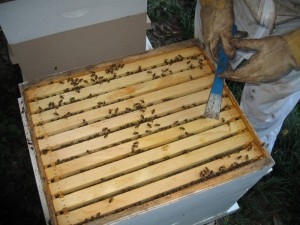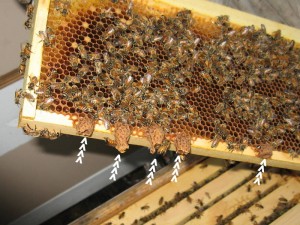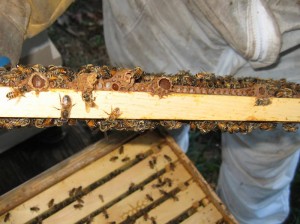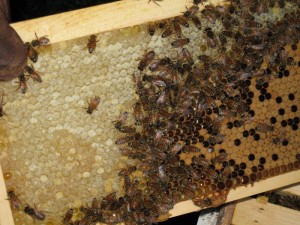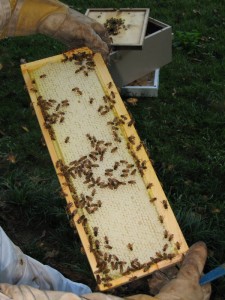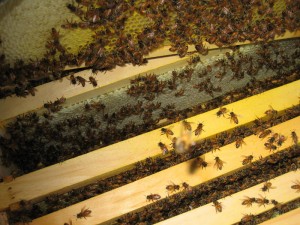Inspection day. It is said that a hive inspection should always have a specific aim. In this case, we were looking for either queen cells (“swarm cells”), indicating a recent swarm, or signs of disease in the frames. It didn’t take long to discover the problem.
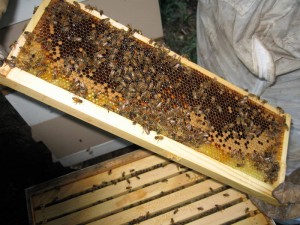
One of the frames from the honey super. The frame had previously consisted of capped-off honey, but now it was mostly larval cells, most empty, some capped).
An interesting photo from the parent hive showing how the hive had converted a frame previously filled with honey (on left) to raise more bees (with capped larvae on right). The ex-swarm hive was doing this to a lesser extent.
A frame taken from the honey super of the ex-swarm hive. No brood here, only capped honey. This what the super should look like, with honey stored for the winter.
We ended the inspection without examining the brood boxes themselves, as it was clear what had happened to the missing bees in the parent hive – they had flown away with the queen. Hopefully, the hive will generate yet another queen.
I had been feeding the hives to build them up for the winter, both to establish an adequate store of honey and a sizeable number of bees. This advice had been widely advanced at local beekeeping meetings and in the state bee society newsletter, but in my case the bees took the opportunity to try to reproduce one more time.
I don’t know what happened to the afterswarm. I haven’t gotten any calls from my neighbors (whew!). I am sorry to report that swarms which leave the hive this late in the year usually do not survive.
No more feeding the bees for now.

